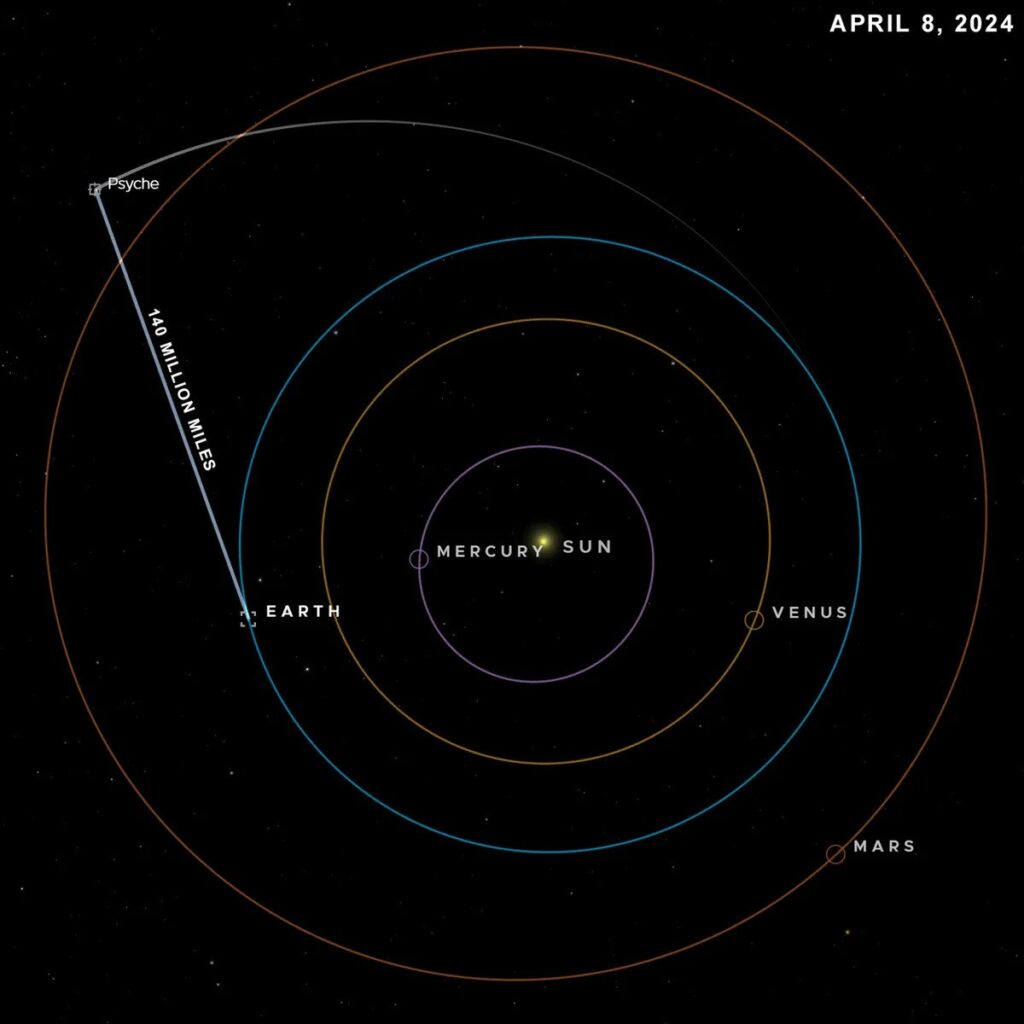NASA’s Psyche mission, en route to explore an enigmatic asteroid, has been trialing an innovative communication method during its journey. Instead of relying on traditional radio waves, the mission team has been experimenting with an infrared laser system. Impressively, this new approach has proven effective even from unprecedented distances. At a staggering 226 million kilometers (140 million miles) away from Earth, Psyche sent its message, a distance equivalent to 1.5 times the span between Earth and the Sun.
Traditionally, Psyche had been transmitting its engineering data via radio waves through NASA’s Deep Space Network. However, in a pioneering move, the mission team opted to also utilize the Deep Space Optical Communication system to transmit data for the first time. Unlike previous transmissions, which consisted of test data rather than spacecraft data, this marked a significant advancement.
The test conducted on April 8 demonstrated that data could be downloaded at a maximum rate of 25 Mbps, surpassing the expected goal of “at least 1 Mbps” by a considerable margin. This rate is notably 10 to 100 times faster than conventional radio transmissions. Previous tests conducted with the spacecraft at closer proximities, within tens of millions of kilometers, successfully transmitted images and even a cat video from deep space. While the technology exhibits promise, there are lingering challenges that require resolution. Notably, optical observations are impeded by cloud cover, unlike radio communications.

Image Credit: NASA/JPL-Caltech/ASU
“We downlinked about 10 minutes of duplicated spacecraft data during a pass on April 8,” Meera Srinivasan, the project’s operations lead at NASA’s Jet Propulsion Laboratory (JPL), said in a statement. “Until then, we’d been sending test and diagnostic data in our downlinks from Psyche. This represents a significant milestone for the project by showing how optical communications can interface with a spacecraft’s radio frequency comms system.”
“We’ve learned a great deal about how far we can push the system when we do have clear skies, although storms have interrupted operations at both Table Mountain and Palomar on occasion,” said Ryan Rogalin, the project’s receiver electronics lead at JPL.
The team plans to conduct further tests in June when Psyche will be positioned at a distance 2.5 times greater than that between Earth and the Sun. This distance mirrors the maximum separation between Mars and Earth. Success in this endeavor could pave the way for establishing a robust, data-intensive network between Earth and Mars.


